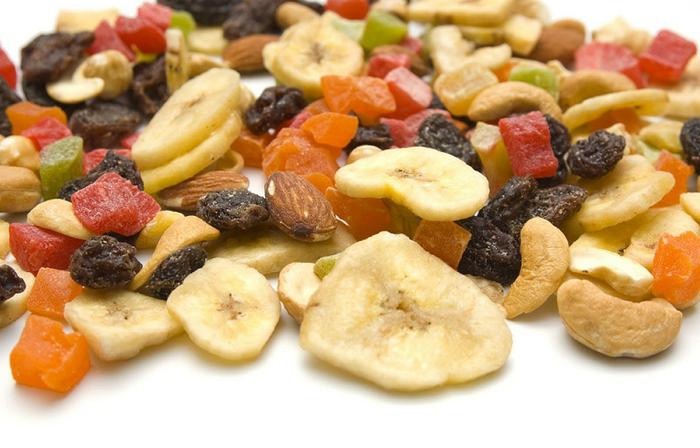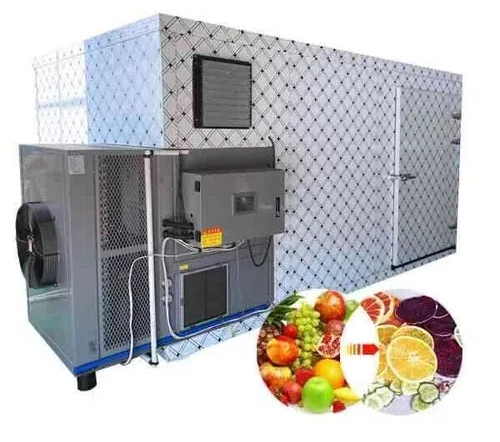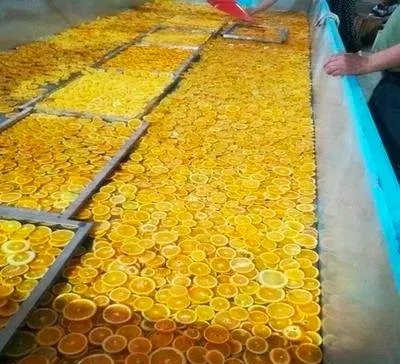
Content Menu
● Introduction
● Understanding Power Usage in Food Dehydrators
● How to Use a Food Dehydrator Effectively
>> Tips for Effective Dehydration
● Benefits of Using a Food Dehydrator
● Popular Foods to Dehydrate
● Troubleshooting Common Issues
● Conclusion
● FAQ
>> 1. How many amps does a food dehydrator use at 125 degrees?
>> 2. Can I dehydrate different foods at the same time?
>> 3. How long does it take to dehydrate food?
>> 4. Is it safe to leave a dehydrator on overnight?
>> 5. How do I clean my food dehydrator?
● Citations:
Introduction
Food dehydrators are essential appliances for preserving food by removing moisture, which inhibits the growth of bacteria and mold. They are widely used for drying fruits, vegetables, meats, and even herbs. One common question among users is: How many amps does a food dehydrator use at 125 degrees? This article will explore this question in detail, along with tips, techniques, and FAQs about food dehydrators.

Understanding Power Usage in Food Dehydrators
The power usage of a food dehydrator is determined by its wattage and the temperature setting. For instance, a typical food dehydrator operates at around 350 watts when set to 125 degrees Fahrenheit. However, it often runs at about 80% of its capacity, consuming approximately 280 watts. To calculate the amperage, you can use the formula:
Amps = Watts/Voltage
For a standard 120V outlet:
Amps = 280W/120V≈2.33 Amps
This means that most food dehydrators will draw between 2 to 3 amps when operating at 125 degrees Fahrenheit.
How to Use a Food Dehydrator Effectively
Using a food dehydrator effectively involves several steps:
1. Preparation: Wash and slice your food into uniform pieces to ensure even drying.
2. Temperature Setting: Set the dehydrator to the appropriate temperature. For vegetables, 125°F is ideal.
3. Loading Trays: Arrange the food in a single layer on the trays, leaving space for air circulation.
4. Monitoring: Check the food periodically to ensure it is drying evenly.
5. Storage: Once dried, store the food in airtight containers to maintain freshness.
Tips for Effective Dehydration
- Choose Fresh Ingredients: The quality of your fresh produce directly affects the final product. Select ripe fruits and vegetables without blemishes.
- Blanching Vegetables: Some vegetables benefit from blanching before dehydration to preserve color and nutrients. This process involves briefly boiling them before cooling them in ice water.
- Seasoning: Consider seasoning your foods before dehydration. A sprinkle of salt or herbs can enhance flavor significantly.
- Rotate Trays: If your dehydrator has multiple trays, rotate them halfway through the drying process to ensure even drying.
- Avoid Overcrowding: Overcrowding trays can lead to uneven drying and longer dehydration times. Always leave space between pieces for optimal airflow.
Benefits of Using a Food Dehydrator
- Preservation: Extends the shelf life of food significantly—dried fruits can last for months or even years if stored properly.
- Nutritional Value: Retains most of the nutrients compared to other preservation methods like canning or freezing, which may lead to nutrient loss.
- Cost-Effective: Saves money compared to buying pre-packaged dried foods from stores. You can buy seasonal fruits and vegetables in bulk when they are cheaper and dehydrate them for later use.
- Customizable: Allows you to control the ingredients and flavors. You can experiment with different seasonings or create unique blends of dried fruits or snacks.

Popular Foods to Dehydrate
When using a food dehydrator, there are numerous options for what you can dehydrate:
- Fruits: Apples, bananas, strawberries, peaches, and mangoes are popular choices. They make great snacks or additions to cereals and baked goods.
- Vegetables: Carrots, bell peppers, zucchini, tomatoes, and green beans can be dried for later use in soups or stews.
- Meats: Jerky made from beef, turkey, or chicken is a high-protein snack that is easy to make at home.
- Herbs: Basil, oregano, thyme, and parsley can be dried for use in cooking throughout the year.
Troubleshooting Common Issues
While using a food dehydrator is generally straightforward, you may encounter some common issues:
- Uneven Drying: If some pieces are dry while others are not, check if you overcrowded the trays or if some pieces are larger than others. Cut them into uniform sizes for consistent results.
- Sticking Food: If your foods stick to the trays after drying, consider using parchment paper or silicone mats specifically designed for dehydrators on your trays next time.
- Odors: Strong-smelling foods like garlic or onions may leave odors in your dehydrator. Clean it thoroughly after use and consider running it with lemon slices or vinegar water to neutralize smells.
Conclusion
Food dehydrators are versatile and energy-efficient appliances that make food preservation easy and convenient. By understanding their power usage and following best practices, you can maximize their benefits while enjoying delicious dried foods. From fruits to meats and herbs, there's no limit to what you can create with a little time and effort.

FAQ
1. How many amps does a food dehydrator use at 125 degrees?
Most food dehydrators use between 2 to 3 amps at 125 degrees Fahrenheit.
2. Can I dehydrate different foods at the same time?
Yes, but ensure they require similar temperatures to avoid uneven drying.
3. How long does it take to dehydrate food?
The time varies depending on the food type and thickness, ranging from 4 to 12 hours.
4. Is it safe to leave a dehydrator on overnight?
Yes, modern dehydrators are designed for long hours of operation; however, always follow the manufacturer's guidelines for safety.
5. How do I clean my food dehydrator?
Most dehydrators have removable trays that are dishwasher safe. Wipe down the base with a damp cloth after each use to keep it clean.
Citations:
[1] https://www.whiteblaze.net/forum/archive/index.php/t-51545.html
[2] https://www.youtube.com/watch?v=lEUA2t2XD5M
[3] https://www.youtube.com/watch?v=JRArvU4PDVc
[4] https://www.reddit.com/r/instantpot/comments/zebuow/incredible_power_use_efficiency_of_instant_pots/
[5] https://www.freshoffthegrid.com/dehydrating-food/
[6] https://www.youtube.com/watch?v=rR2G5UO-5Ms
[7] https://www.reddit.com/r/dehydrating/comments/10aelr7/how_do_i_calculate_the_power_usage_of_my/
[8] https://homesteadingfamily.com/preservation-101-intro-to-dehydrating-food/
[9] https://www.youtube.com/watch?v=_rYXnlrPUM4
[10] https://resource.capetown.gov.za/documentcentre/Documents/Procedures,%20guidelines%20and%20regulations/SOH_Audit_Energy_cheat_sheet.pdf
[11] https://learn.eartheasy.com/guides/a-beginners-guide-to-dehydrating-food/
[12] https://www.youtube.com/watch?v=A5Nf2P7-nbU
[13] https://forum.solar-electric.com/discussion/345541/dehydrator-power-consumption
[14] https://www.breville.com/content/breville/us/en/blog/cooking/how-to-use-a-dehydrator/_jcr_content/root/container_741553154/container/image.coreimg.85.1200.jpeg/1718622778417/how-to-use-dehydrator.jpeg?sa=X&ved=2ahUKEwix4d_l7OyKAxWE8MkDHSJnMPcQ_B16BAgIEAI
[15] https://www.facebook.com/Clarasconfectioneryng/videos/how-to-use-a-food-dehydratorfood-dehydrators-are-still-available-in-various-size/410620696266909/?locale=zh_CN
[16] https://www.slashplan.com/food-dehydrator-energy-calculator-cost-and-kwh-usage/
[17] https://www.allrecipes.com/article/how-to-use-a-food-dehydrator/
[18] https://stock.adobe.com/search?k=dehydrator
[19] https://foodprepgroup.com.au/buddy-dehydrator-24-tray/
[20] https://www.foodandwine.com/lifestyle/12-brilliant-ways-use-dehydrator
[21] https://www.nytimes.com/wirecutter/reviews/best-food-dehydrator/











